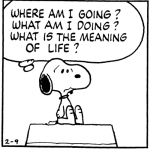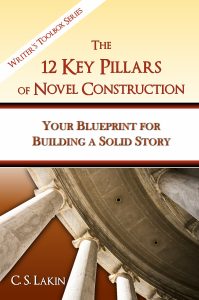4 Ways to Bring Out Theme in Your Story
Theme is such an important element of story, regardless of medium. Even visual arts, such as paintings or sculture, tell a story and often center on some theme. Yet, you’ll find few blog posts or podcasts discussing what theme is in a story and how to showcase it.
I feel theme is so crucial to a great story that I chose it as one of the four corner pillars of novel construction. And while some novelists may argue that the genre they write in really doesn’t require themes (suspense/thriller, mystery, for example), for a deeper, richer story, themes are the ticket.
To get to the heart of the themes for your story, ask yourself questions:
- Why I am passionate about this plot I’ve come up with?
- What issues speak to my heart or upset me?
- How can I have my characters embody these opinions or passions?
- What kinds of conflicts in values, morals, beliefs, and ideas can my characters have that will enhance my premise?
Think about your fears, what you love or hate in others, what issues fascinate you. These can be seeds for your themes.
Theme is what your story is really about. Plot is what happens and is a vehicle for your theme. I explain this viewpoint in depth in my 12 Key Pillars of Novel Construction book as well as in my online course, The 4 Essential Pillars of Novel Structure.
I’ve said this countless times: if you don’t nail these four corner pillars first, it’s going to be super difficult to craft a strong story. Just four. If you hate plotting and you’re still following my blog (amazing!), surely you can spend some time working out your corner pillars.
Screenwriter/film producer Gerald DiPego says, “If you want to do more than just entertain, if you want to entertain and enrich, inspire, or say something about the world and the human condition, then you have to think about what you want to say in order to subtly weave it through the story.”
Two words in his statement stand out to me: subtly and weave.
Whether you start off your novel with your themes clearly in mind or you discover them as you get into plotting and developing that killer concept and character’s goal, I’ll venture to say that if you begin with theme in mind, it will make this process so much easier. And you’ll avoid forcing your themes onto your characters and story line.
This is why a lot of great novelists and screenwriters solidify their themes before writing their story or script.
The challenge for novice writers is to weave those themes in subtly without sounding preachy or “on the nose.”
Once More, It’s about “Show, Don’t Tell”
Why is preaching a bad thing? Because it usually is telling instead of showing.
Sure, you can, and often should, have characters spout their fervent beliefs in dialogue, and maybe even in their direct thoughts. But if you put them on a soapbox and have them pontificate to the reader (via other characters), it will come across too heavy-handed.
You want your theme to be wholly integrated into your story the way a glob of honey mixes into your oatmeal so that the whole bowl is sweet.
Using dialogue is a great way to bring out themes, especially when it involves conflict. Have your protagonist be passionate about something (justice, racial equality, freedom, poverty, the death penalty, voters’ rights, etc.) and make then face someone who feels just as strongly in opposition. That can bring out those rich themes.
So let’s look at 4 ways you can subtly weave your themes into your story:
 Pose your theme as a question. Instead of stating “The death penalty is the best deterrent to violent crime,” ask “Is the death penalty the best deterrent to crime, and if not, what is? What is better? What might the downside be to the death penalty?” A character or two can ask the tough questions, whether they’re actually answered by anyone or not.
Pose your theme as a question. Instead of stating “The death penalty is the best deterrent to violent crime,” ask “Is the death penalty the best deterrent to crime, and if not, what is? What is better? What might the downside be to the death penalty?” A character or two can ask the tough questions, whether they’re actually answered by anyone or not.
Consider the novel The Martian. In certain spots in the story, and in the whole ending section (of the book, not the movie), questions are asked, such as, “Why would humans spend so much money and time trying to save the life of one person?” and “What is the value of a single human life?” The themes of the book are brought out by the characters and the voice of the protagonist in narrative.
- Bring out your protagonist’s motivation. Inner motivation (core need, passion, drive) is where your universal themes can be found. Think about the big moment at your climax, where your character has his powerful epiphany. Ask: What has he learned? What hard choices did he have to make? The hero’s journey embodies theme, whether it’s a story of victory or defeat. What take-home message do you want to covey through your protagonist’s inner journey?
- Let the opposition speak. Don’t be one-sided in your arguments. As I mentioned above, think of who can oppose your protagonist with a conflicting viewpoint. Conflict is story. And meaningful conflict that occurs because of passionate beliefs is terrific conflict. Your antagonist should feel just as strongly about her beliefs and morals as your hero. And when you present those arguments just as powerfully and passionately as your protagonist’s, then your themes sing.
- Use symbolism and motifs to drive home your themes. Themes are wonderfully pounded home when motifs and symbols are used. Think about To Kill a Mockingbird. The theme of not punishing the innocent is wrapped up in Atticus’s discourse about killing a mockingbird. Those birds harm no one, so it would be a crime to hurt them. The overarching plot of the legal trial Finch defends (note the symbolism of his name—a tiny bird, up against the big raptor of the prejudiced justice system) as well as the huge plot element of Boo Radley’s actions of saving Scout are all tied into the theme through this clear symbol of an innocent
 bird.
bird.
So consider these four ways you can bring your themes to the forefront of your novel subtly and without being obnoxious or preachy. Everything in your story—plot, character arc, relationships, and, yes, themes—should develop organically, seamlessly.
Don’t discount the importance of theme. If you need to learn more, get my book The 12 Key Pillars of Novel Construction, and use the workbook to really explore and flesh out your themes. You and your readers will be glad you did!
What novels’ themes really stand out to you? Can you think of a key question a character asked in the novel to bring out the theme? What about a symbol or motif?
Featured Photo by Alvin Lenin on Unsplash












Another helpful post. I really like the idea of posing the theme as a question. That will help to get to it. Thanks. I will be posting the link on my blog.
This post is helpful. I’m intrigued with the idea of having one of the characters put the theme in the form of a question.
I have been searching for a good article on Themes and this is the best. Thanks, Susanne.